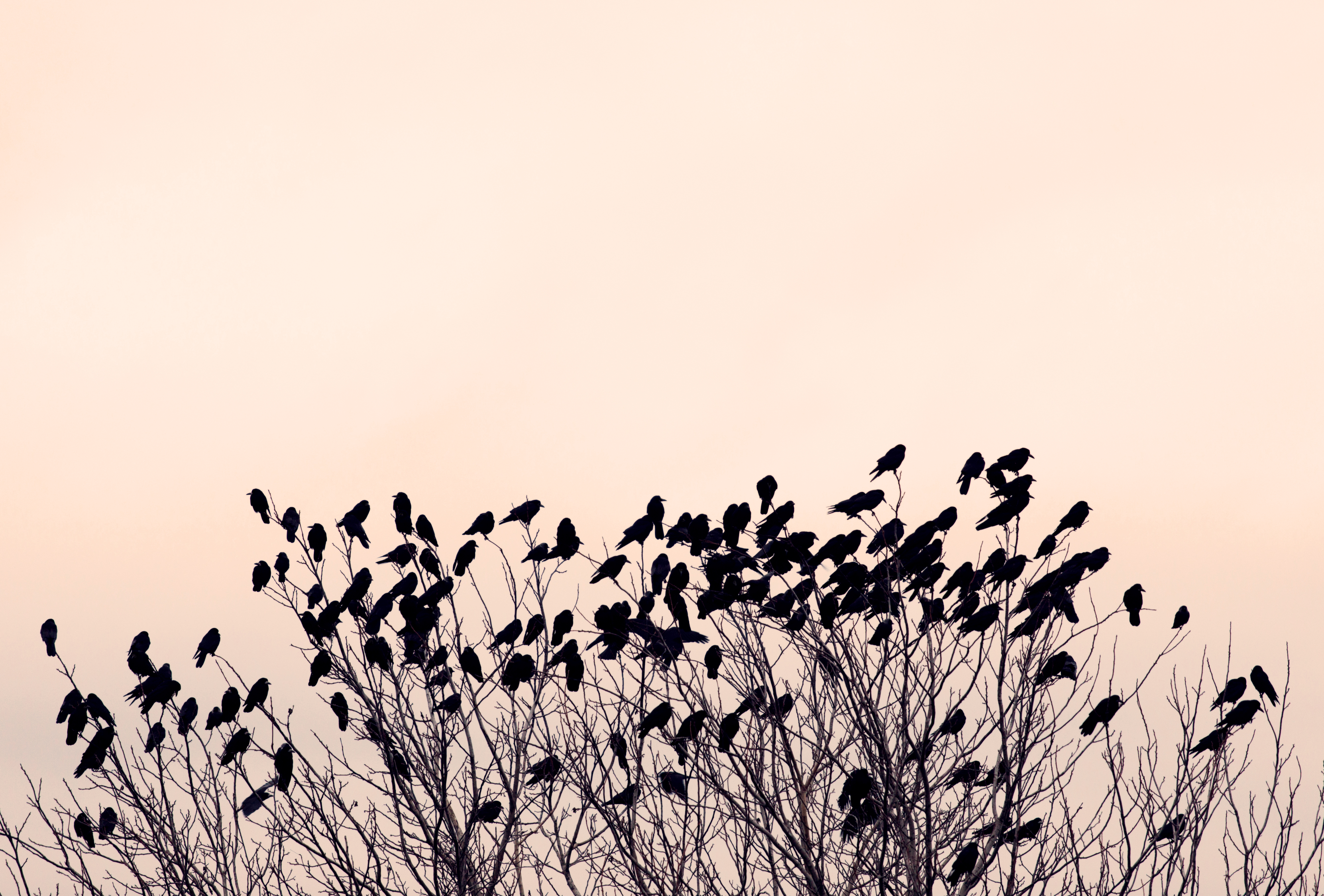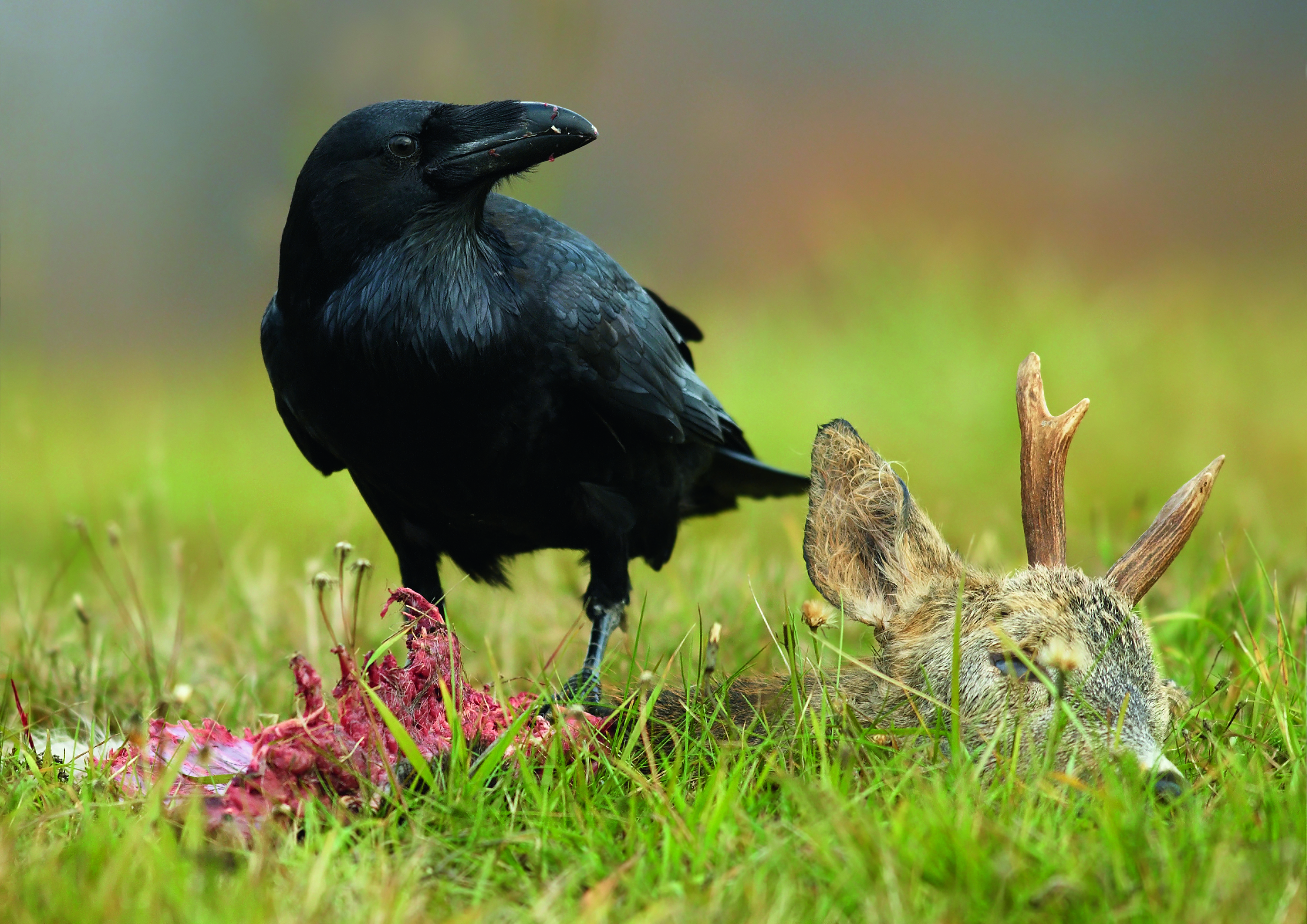Intelligent, loyal and fun-loving, the raven also has a dark, dangerous and deadly side that has won it few friends.
Watch a pair of ravens on a windy day, sky diving with all the majesty and skill of the Red Arrows, and it is hard not to fall totally under their spell.
In sunlight, the ministerial black plumage shines with a palette of vibrant colour; shot silk, oil on a pool of water. Their aeronautic skills are astounding, the pair-loyalty stronger than most marriages, and spying on them through a telescope or binoculars as they perch and preen reveals an extraordinarily tender side, birds brimming with character as the ruff of feathers around the neck, known as throat hackles, are raised in expressive display.
I have watched them in many wild and not so wild places, and always find their powers totally seductive. Ravens are magical, sociable, playful – I have seen them sliding down a frozen hill burn for the sheer joy of it, and playing with seaweed and sticks on the shore. And, in the depths of a Highland winter, they seem almost poetically melancholy as they pick ravenously over the carcass of a sheep or deer.
On a windswept cliff on mainland Orkney, I was fascinated by a raven’s unruly nest on a ledge and peered through my rain-fogged binoculars to scrutinise it further. Long recognised as the most intelligent members of the corvid clan, ravens – like their human counterparts on Orkney – are innovative, making do with whatever they can find in a largely treeless landscape. This nest was constructed entirely of dozens of strands of barbed wire, topped with a comfortable padding of sheep’s wool and cattle hair. Nests have been recorded up to an astonishing ten feet tall, though most do not reach such giddy heights.

Ravens thrive in Orkney and Shetland, where huge gatherings have been recorded. A whale that washed ashore at Uya Sound in 1864 attracted over 800 of the birds, which came from all over the surrounding islands for the feast. In 1900 five putrefying orca on the shore at Weisdale in Shetland brought in 500.
Onlookers described them as vulture-like, and said they came in clouds darkening the skies, appearing as if an efficient avian bush telegraph had alerted them to the bounty.
The large landfill site at Sullom Voe oil terminal was also a constant attraction, with hundreds of ravens taking advantage until it was closed at the end of the 1960s.
With the Scottish Raptor Study Group’s recent adoption of the raven as an ‘honorary raptor’, it would seem the bird has established itself in our favour, but our relationship with the raven is long and complex.
Noah released one from the ark to see if the flood had sub sided, illustrating the bird’s intelligence. The Gaels believed it was wisely spiritual. Many regarded it as a seer, a magical and mythical bird – the St Kildans, for example, believed it had more prophetic power than any other creature.
But, since the raven can smell death from a considerable distance, it was feared too and regarded as harbinger of doom; their gatherings around battlefields added to the macabre scene as they picked over the corpses.
In some cases bodies would be left out for them so that only the bones would remain, easing the work of burials.
An ‘unkindness’ is the collective name for a group of ravens, indicating our negative feelings towards the bird.
It would have been common to see an unkindness in the middle of Edinburgh in the late 1500s; ravens regularly nested on Arthur’s Seat and, like kites, were welcomed for the role they played in clearing rubbish.
In fact, between them, the two avian species were probably more efficient than any local council, and a good deal more reliable. Like kites, ravens thrive on carrion, but their diet also includes a lot of vegetable matter. As was once said: ‘From a worm to a whale, a raven does not mind.’ Unfortunately, their penchant for sheep, and barbarous habit of pecking out the eyes and tongues of lambs, brought them to the top of the hit list.
Persecuted relentlessly, the intelligent survivors fled to remote areas and adapted to a life as crag nesters, as far from humans as possible. Despite this, numbers crashed.
Over a seven-year period in the 1820s nearly 2,000 ravens were killed in Caithness and Suther land. On the Duchess of Sutherland’s estate a bounty of two shillings was paid, and 936 ravens were exterminated between 1831 and 1834. Yet, ironically, young ravens were also taken from the nest and hand-reared for the pet trade because it was said they made such delightful and amusing companions – they are excellent mimics and have a huge repertoire of vocalisations, and are reputed to bond strongly with their human companions.
Ravens are one of the earliest nesters and often have young by the end of February.
Being carrion feeders allows them to take full advantage of winter’s casualties. In some areas where the birds co-exist with wild goats, weak or dying kids also born early in the season frequently become prey. As many hill farmers will testify, lambs too are a source of food, leading to endless conflict between livestock farmers and our most controversial corvid.

While Britain’s farming has benefited from new agricultural improvement schemes, these have proved less favourable to the raven and, as fewer creatures die from bad husbandry practices, raven numbers fall further.
Uplifting fallen stock to incinerators instead of burying them on the farm does little to help the raven’s cause either.
The birds are thriving in some parts of the country though they still suffer illicit persecution.
Following anecdotal evidence that they were preying on grouse eggs and chicks, in 2013 the Langholm Moor Demonstration Project fitted five young ravens with radio tags. The birds were then tracked and it was found that they did not stray far from a very small home range.
Prey remains and pellets identified that the birds’ diet consisted largely of small mammals, invertebrates and wool. The rest was made up of small birds, reptiles and amphibians, rabbits and hares, and some grouse.
This was part of a project to monitor grouse nests with cameras and other equipment. As 2013 proved to be an above-average season for grouse at Langholm, the findings were inconclusive.
In North America, the collective name for the raven is a ‘bazaar’, a ‘constable’ or, appropriately, a ‘rant’ – while it still causes hackles to rise and considerable rants in some circles, many stalkers I know are fond of the ‘braw muckle corbie’ that follows them as they leave for a day on the hill. With its connections to the Norse god Odin, who had a pair of ravens on his shoulders, this is a bird that once hunted alongside the wolf in Scotland.
Seton Gordon (1886-1977), one of our finest Highland naturalists, wrote: ‘The raven is at present day the emblem of good luck with stalkers because it appears when a deer is killed, and to hear the raven’s croak when setting out on a day’s stalking fills the hunter’s heart with joy.’
This feature was originally published in 2014.
TAGS

